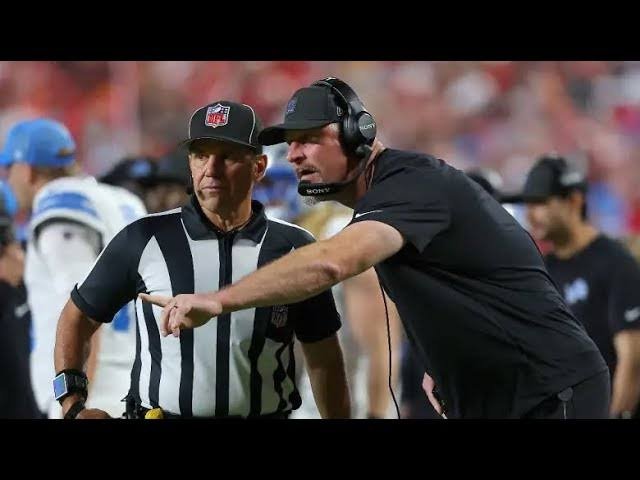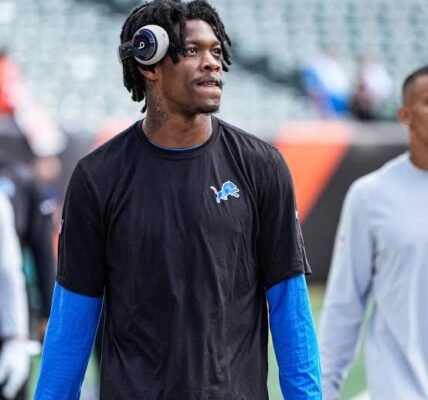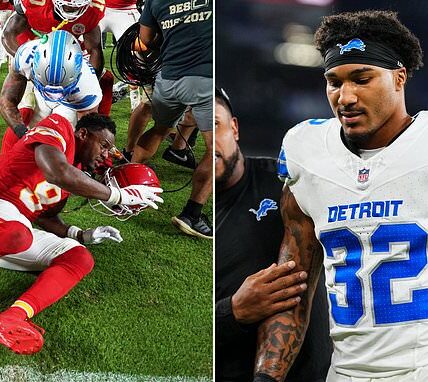NFL vice president of football operations Troy Vincent has offered more insight into the officiating confusion surrounding the Detroit Lions’ Week 6 game against the Kansas City Chiefs.
In a story that just won’t fade away, the league attempted to clarify the details behind the controversial ruling that came during the Lions’ trick play against Kansas City. The debate isn’t necessarily about the call itself but whether officials may have gone beyond their authority.
The Lions ran a creative play with quarterback Jared Goff going in motion before catching a pass from running back David Montgomery. Initially ruled a touchdown, officials later gathered and determined it was illegal due to an illegal motion penalty, wiping the score off the board.
After the game, referee Craig Wrolstad said that the league’s New York-based “Art McNally GameDay Central” was not involved in the decision. However, Lions head coach Dan Campbell claimed otherwise. Following the game, Campbell told reporters, “I know it came from New York.” Later that week, during his appearance on 97.1 The Ticket, he reiterated that an on-field official told him the call originated from New York.
The issue is that GameDay Central can only step in for certain reviews, and illegal motion is not one of them—it’s strictly an on-field judgment call. “It was not, and I’m not sure who Coach Campbell was referring to, but we did not (intervene),” Vincent said to Mike Florio of ProFootballTalk. “We didn’t assist in that. We didn’t have to. I’m part of GameDay Central for every game. And just to clarify, you could hear the officials discussing it immediately, even before the touchdown.”
As for why the ruling took so long, Vincent compared it to an intentional grounding review—officials had to communicate and confirm whether all the illegal motion elements were met. “They’re talking it through,” Vincent explained. “In this case, even though it was a motion—an illegal shift—it’s similar to grounding: did the ball reach the line of scrimmage? Was there a receiver nearby? Was the quarterback in the pocket? You can hear the officials conferring. That’s what was happening here. We didn’t need to get involved.”
This explanation aligns with Wrolstad’s postgame comments, who clarified how quarterback movement transitions between officials’ zones of responsibility. “It’s my job to see if the quarterback stopped behind center,” Wrolstad said. “The down judge monitors the player in motion, and we had to talk between him, my umpire, and my line judge to determine whether he stopped before or after going in motion. There was a bit of confusion on what we each saw, which is why the flag came so late.”
So, the NFL remains firm in its account of events—meaning one of three scenarios is true:
The league is covering up and protecting its image.
Dan Campbell is lying for an unclear reason.
Or, the on-field official who told Campbell the ruling came from New York was simply mistaken.
Believe whichever version you think makes sense.




